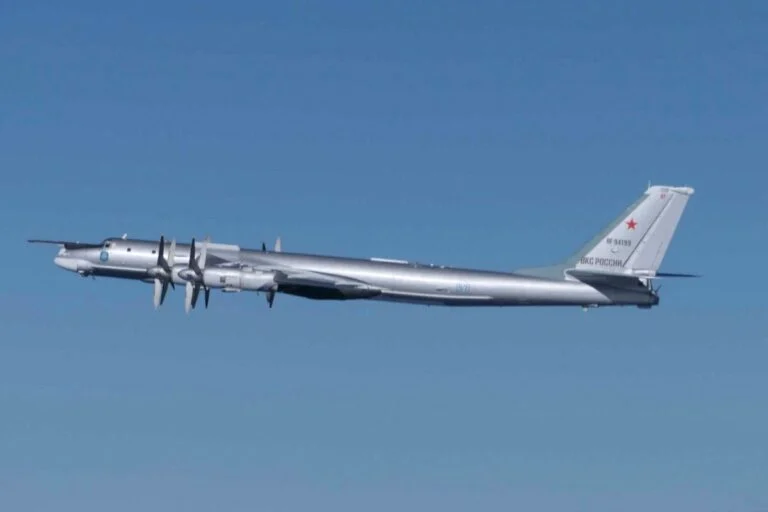Headline
OPINION: Kings And Imams In Yorubaland

By Lasisi Olagunju
Beyond its outer casing of spirituality, the post of Imam in Yorubaland potentially guarantees prestige, power and prosperity. That is why people fight to be Imam as grisly as princes fight to be king.
But when siblings fight to the death, they lose their chest to outsiders. The Yoruba Muslim community is almost always at war with itself. The League of Imams and Alfas of Yorubaland, Edo and Delta in April this year scrambled to douse a fire over who should be their mufti. The mufti is the jurisconsult in Islamic jurisprudence. Two persons were named by two contending power blocs. The league, in a signed public statement in April this year, asked both to stay off the post. There has been some quiet since then. In Ogbomoso, there is a very bad division over the leadership of the Muslim community in the town: the Chief Imam on one side, a section of the Muslim community led by the Aare Musulumi on the other side.
Some Yoruba Muslims are angry that the Soun of Ogbomoso, Oba Afolabi Oloye, a Christian, issued a query to the Chief Imam of Ogbomoso. I read comments from some of them and chucked to myself. When you make someone to hire you, you should expect the day he will fire you. But, everyone conversant with the case knows that the real problem of the Imam is not with the oba. It is a family sore that has festered into a full-blown Muslim-Muslim civil war. The palace originally came in as an arbitrator but because it went about it as Tortoise did while separating a street fight between Shrew and Squirrel, it now nurses a bleeding nose.
Shouldn’t history have been a guide? In all Yoruba towns where cracks among Muslims have occurred, lizards stay put there. Some of those divisions and difficulties date back almost 200 years; some of them still subsist. The secretary of the defunct Muslim Congress of Nigeria, in a July 6, 1950 letter to the colonial secretary, pointed at such unfortunate Muslim-Muslim disputes over imamship in Ijebu Ode, Abeokuta, Ife, Iseyin, Ondo and Ijebu Igbo. G.O. Gbadamosi’s ‘The Imamate Question Among the Yoruba Muslims’ (December, 1972), speaks to that matter and several cases of fights and wars over leadership among Yoruba Muslims. T.O. Avoseh’s ‘Islam in Badagry’ and his ‘A Short History of Epe’ also detail some of those crises and their fractious implications on the early years of Islam in Yorubaland. There is also Toyin Falola’s ‘Islam and Protest in Colonial South Western Nigeria’ (1991).
MORE FROM THE AUTHOR: OPINION: Reps’ Drunkard Democracy
You may find this piece of history from Gbadamosi (1972: 236-237) to be of interest: “In Iseyin in 1941, the office of the Chief Imam became vacant, and a dispute arose as to the succession. A very vocal section of reformers were unwilling to allow the Naib, Afa Busari, to succeed. Afa Saminu of Oke-Ola quarter was preferred by and large for his learning and other qualities. Controversy raged. In the attempt to resolve this issue, the local ruler, Aseyin (of Iseyin) acted and proclaimed another person (Afa Mustafa) as Imam. He had him turbaned, and claimed a rightful appointment. The other side challenged this and reported the matter to the Alaafin and Council.” They also petitioned the Senior Resident asserting that “the question of the selection of a Chief Imam ought not to have political influence…” The Resident “found that Afa Saminu was more popular with the people than Busari (36 v 16) but the Aseyin still insisted on his third candidate. As a compromise, the office of Deputy Noibi was offered Saminu” but his supporters argued that it was not customary among Muslims “that after the Chief Imam, there should be a deputy besides the Ratibis of each individual quarter who are deputies over whom the Chief Imam is alone superior…” The historian reports that “so, both sides had their own Imams and the two original factions prayed separately” amidst “abusive songs and parades.” The above shows how long the journey of rifts has been for the Yoruba Muslim.
Back to Ogbomoso. You would think that it would always be true that what founds a town rules the town (ìdá’lùú ni ìsèlú). In November 2021 when he was appointed as the Chief Imam of Ogbomoso, Dr Taliat Oluwashina Yunus Ayilara went online and announced the process that made him the number one Muslim in Ogbomoso: “About a month ago after the demise of the late Imam of Ogbomoso, I was beckoned by my family to fill the position. After a long process of screening, I was appointed today, 11th November, 2021 by the Soun of Ogbomosoland as the 13th Chief Imam of Ogbomosoland.” There is a video online that shows him being installed as Chief Imam, not in the central mosque, but inside the palace – which makes him a chief of the Soun. There is a video showing where the Imam describes his office as an extension of the palace and mis-defines himself a staff member of the oba. Ancient Romans were very deep thinkers. They had a maxim for a situation like this: “volenti non fit injuria” – meaning, “to a willing person, it is not a wrong.” You cannot knowingly and voluntarily submit to a relationship and cry blue murder as a result of the result.
For the king, the Ancient Romans again. They said “Injuria non excusat injuriam” – a wrong does not excuse a wrong. I strongly think the Soun should not have allowed himself to be led into the dark hole of querying the Imam. He should have continued to watch the show but monitor the temperature to avoid a ruptured vessel. The oba’s status as a pentecostal pastor politically disqualified him from directly moving against the Imam. Even if he was encouraged to take that step by opposition Muslim leaders in the town, Kabiyesi should have known that in Yorubaland no one helps another to discipline their child and gets praised for it (bá mi na omo mi kò dé inú olómo). In religion (whether Islam, Christianity or Ìsèse), it is very resentful seeing an outsider, a competitor, holding the whip against ‘our own’. We say you don’t chase a problem-child into the mouth of a tiger. Issuing that query was ill-advised and I believe the king must have realized the error.
MORE FROM THE AUTHOR: OPINION: Ijebu And Their Ojude Oba
If you’ve ever studied how leaf becomes soap, you would understand why Islam and the Yoruba traditional leadership are the proverbial soap and its cover-leaf. Islam is historically more than a religion in Yorubaland. Because the religion came in there hundreds of years before Christianity, the relationship between the leadership of Muslims and the oba in every community has always been deeper than outsiders can imagine. Dada Adelowo, in his ‘Imperial Crises and their Effect on the Status of Islam in Yorubaland in the 19th Century’ (1982), says so much on this.
The Imam in every Yoruba town, is, essentially, both a religious leader and a high chief. He participates in the administration of the town under the leadership of the oba who may or may not be a Muslim. But, this relationship notwithstanding, should an oba be involved in the choice and installation of a religious leader – especially an Imam? The person who would settle a quarrel, should he be located in the structure of the rift? (Eni tí yóò pa’rí ìjà, won kìí ròó mó ejó). Successive Soun (of all faiths) have been appointing successive Chief Imams for Ogbomoso since the very beginning which has been put as the year 1818. The history of that arrangement is an interesting read in communal unity, amity, appreciation and mutual respect. But times have changed. Even if there is a law that empowers obas to make religious appointments, should such not be amended to avoid the kind of incongruity and tension and insults we see in Ogbomoso?
The making of the Ogbomoso convention, with the tradition that enables it, obviously did not envisage a future that is today. Critical sections of the society are seeing not an oba querying his chief; what they see is a pastor seeking to sanction an Imam. It is awkward, cannot be explained. Muslim leaders need to quickly work with the traditional leadership in all communities where such arrangements subsist for amendments. The obas, themselves, should initiate and encourage that change. It will insulate them (the kings) from avoidable insults and insubordination.
Headline
Aircraft Crashes In Owerri With Four Persons Onboard

A Cessna 172 aircraft with registration number 5N-ASR, operated by Skypower Express, has crashed at the Sam Mbakwe International Cargo Airport, Owerri, Imo State.
The aircraft had departed Kaduna International Airport en route to Port Harcourt International Airport before diverting to Owerri after the crew declared an emergency.
The crash occurred at about 8:00 pm on the airport premises, with four passengers and crew members onboard.
Confirming the incident, the Director, Public Affairs and Family Assistance of the Nigerian Safety Investigation Bureau (NSIB), Mrs. Bimbo Oladeji, said the agency had been notified of the crash.
READ ALSO:Social Media Feud Spills Into Aircraft As VDM, Mr Jollof Exchange Blows
According to the NSIB, the aircraft crashed on the approach area of Runway 17, but no fatalities have been recorded so far.
The statement said: “Following the occurrence, airport emergency services were successfully activated and arrived on site promptly. Reports indicate that there was no post-crash fire, and the runway remains active for flight operations, with other aircraft taking off safely after the incident.
“Efforts are currently underway to coordinate the recovery and evacuation of the distressed aircraft from the crash site to allow for a detailed wreckage examination.”
The NSIB said it has officially activated its investigation protocols in line with its statutory mandate
READ ALSO:Ogun To Prosecute DJ Over Multiple Road Crashes
The Director-General of NSIB, Capt. Alex Badeh Jr., sympathised with the management of Skypower Express over the incident and expressed relief that no lives were lost.
Badeh Jr. added that the Bureau’s investigation team is already coordinating with relevant authorities to secure the crash site and commence a detailed investigation into the cause of the accident.
Two days ago, 11 persons narrowly escaped death as a private jet crash-landed at Mallam Aminu Kano International Airport, Kano, on Sunday morning.
The occupants, including passengers and cabin crew, were safely evacuated amid an intense atmosphere, eyewitnesses told The Guardian.
READ ALSO:Tanker Crash Kills Three, Fire Razes Shops In Kano
The private jet, owned by Flybird Aviation, crash-landed at about 9:30 a.m. while approaching Kano Airport en route to Abuja.
The incident attracted urgent attention, with emergency staff and other stakeholders converging at the runway to render rescue operations.
The management of the Federal Airports Authority of Nigeria (FAAN) is yet to release an official statement on the incident. Unofficial sources disclosed that the passengers have been taken to an unknown destination.
Several aircraft incidents have occurred at Kano Airport, with several lives lost.
The last incident occurred in May 2002, when an EAS Airline aircraft departed the runway at Aminu Kano International Airport at 1:29 p.m. local time en route to Lagos.
Headline
Musk Breaks Record As First Person Worth Over $600 Billion

Elon Musk, Chief Executive Officer of SpaceX, Tesla, and xAI, has reached a new personal wealth milestone, surpassing a net worth of $600 billion, driven primarily by a recent valuation increase of SpaceX.
The development makes Musk the first individual in history to exceed the US$600 billion threshold.
According to Bloomberg’s Billionaires Index, Musk’s net worth stood at approximately $638 billion as of 15 December 2025, with the increase largely attributed to SpaceX, which was recently valued at around $800 billion following an insider share sale.
The privately held aerospace company, based in Starbase, Texas, is now considered the most valuable private firm globally, significantly boosting Musk’s personal holdings.
READ ALSO:Elon Musk Joins ‘Cancel Netflix’ Campaign
Musk’s stake in Tesla, estimated at roughly 12 per cent, is valued at nearly $200 billion, while his majority ownership of xAI Holdings is estimated at $60 billion.
Collectively, these assets place him on track to potentially approach US$700 billion, widening the gap between him and the world’s second-richest individual, former Google CEO Larry Page, valued at $265 billion.
The SpaceX valuation comes ahead of a projected public listing in 2026, which could see the company valued at approximately $1.5 trillion.
“Other shareholder meetings are snooze-fests but ours are bangers. Look at this. This is sick,” Musk said in November during Tesla’s shareholder meeting, referring to a performance-linked pay package approved by investors.
READ ALSO:EU Fines Elon Musk’s X €120m For Violating Digital Content Rules
He added, “I super appreciate it.” The package, potentially worth up to US$1 trillion in stock, is tied to market-capitalisation and operational milestones over the next decade.
SpaceX’s Starlink satellite network has also contributed to investor confidence. The company continues to expand high-speed internet access to underserved regions worldwide.
Chad Gibbs, Vice President of Starlink Operations, stated that the satellite technology “bypasses the need to build massive amounts of infrastructure,” allowing broader and faster connectivity.
Musk’s ascent in personal wealth follows years of strategic risk-taking and long-term planning, with Tesla’s focus on electric vehicles, battery technology, and autonomous systems laying the foundation for his financial growth.
Analysts note that the combination of SpaceX’s soaring valuation, Tesla’s long-term incentives, and Musk’s diverse portfolio underpins his current status as the world’s wealthiest individual.
Headline
South Korea, Japan Protest China, Russia Aircraft Incursions

South Korea and Japan reacted furiously on Wednesday after Chinese and Russian military aircraft conducted joint patrols around the two countries, with both Seoul and Tokyo scrambling jets.
South Korea said it had protested with representatives of China and Russia, while Japan said it had conveyed its “serious concerns” over national security.
According to Tokyo, two Russian Tu-95 nuclear-capable bombers on Tuesday flew from the Sea of Japan to rendezvous with two Chinese H-6 bombers in the East China Sea, then conducted a joint flight around the country.
The incident comes as Japan is locked in a dispute with China over comments Prime Minister Sanae Takaichi made about Taiwan.
READ ALSO:China Backs Nigeria, Warns Against Foreign Interference
The bombers’ joint flights were “clearly intended as a show of force against our nation, Defence Minister Shinjiro Koizumi wrote on X Wednesday.
Top government spokesman Minoru Kihara said that Tokyo had “conveyed to both China and Russia our serious concerns over our national security through diplomatic channels”.
Seoul said Tuesday the Russian and Chinese warplanes entered its air defence zone and that a complaint had been lodged with the defence attaches of both countries in the South Korean capital.
“Our military will continue to respond actively to the activities of neighbouring countries’ aircraft within the KADIZ in compliance with international law,” said Lee Kwang-suk, director general of the International Policy Bureau at Seoul’s defence ministry, referring to the Korea Air Defence Identification Zone.
READ ALSO:Trial For South Korean Woman Accused Of ‘Suitcase Murders’ Starts Today
South Korea also said it deployed “fighter jets to take tactical measures in preparation for any contingencies” in response to the Chinese and Russian incursion into the KADIZ.
The planes were spotted before they entered the air defence identification zone, defined as a broader area in which countries police aircraft for security reasons but which does not constitute their airspace.
Japan’s defence ministry also scrambled fighter jets to intercept the warplanes.
Beijing later Tuesday confirmed it had organised drills with Russia’s military according to “annual cooperation plans”.
READ ALSO:South Korean Actress Kim Sae-ron Found Dead In Seoul Apartment
Moscow also described it as a routine exercise, saying it lasted eight hours and that some foreign fighter jets followed the Russian and Chinese aircraft.
Since 2019, China and Russia have regularly flown military aircraft into South Korea’s air defence zone without prior notice, citing joint exercises.
In November last year, Seoul scrambled jets as five Chinese and six Russian military planes flew through its air defence zone.
Similar incidents occurred in June and December 2023, and in May and November 2022.
READ ALSO:Russia Insists Ukraine Must Cede Land Or Face Continued Military Push
Meanwhile, Tokyo said Monday it had scrambled jets in response to repeated takeoff and landing exercises involving fighter jets and military helicopters from China’s Liaoning aircraft carrier as it cruised in international waters near Japan.
It also summoned Beijing’s ambassador after military aircraft from the Liaoning locked radar onto Japanese jets, the latest incident in the row ignited by Takaichi’s comments backing Taiwan.
Takaichi suggested last month that Japan would intervene militarily in any Chinese attack on the self-ruled island, which Beijing claims as its own and has not ruled out seizing by force.
AFP

 News3 days ago
News3 days agoEdo Assembly Charges Contractor Handling Ekekhuan Road To Accelerate Work

 Metro2 days ago
Metro2 days agoSuspected Kidnappers Abduct 18 Passengers On Benin-Akure Road

 Sports1 day ago
Sports1 day agoJUST IN: Dembélé Named FIFA Best Men’s Player, Bonmatí Wins Women’s Award

 News2 days ago
News2 days agoI’m Not Distracted By Anti-Niger Delta Elements, Says PAP Boss, Otuaro

 Metro2 days ago
Metro2 days agoNDLEA Seizes 457kg of Cannabis, Arrests Suspected Trafficker In Edo

 News2 days ago
News2 days agoOPINION: Time For The Abachas To Rejoice

 News1 day ago
News1 day agoWage Dispute: Court Orders PSG To Pay Mbappe €61 Million

 Business1 day ago
Business1 day agoCBN Revokes Licences Of Aso Savings, Union Homes As NDIC Begins Deposit Payments

 News2 days ago
News2 days agoEx-Nigerian Amb., Igali, To Deliver Keynote Address As IPF Holds Ijaw Media Conference

 News2 days ago
News2 days agoOkpebholo Pledges To Clear Inherited Salary Arrears, Gratuities At AAU


























